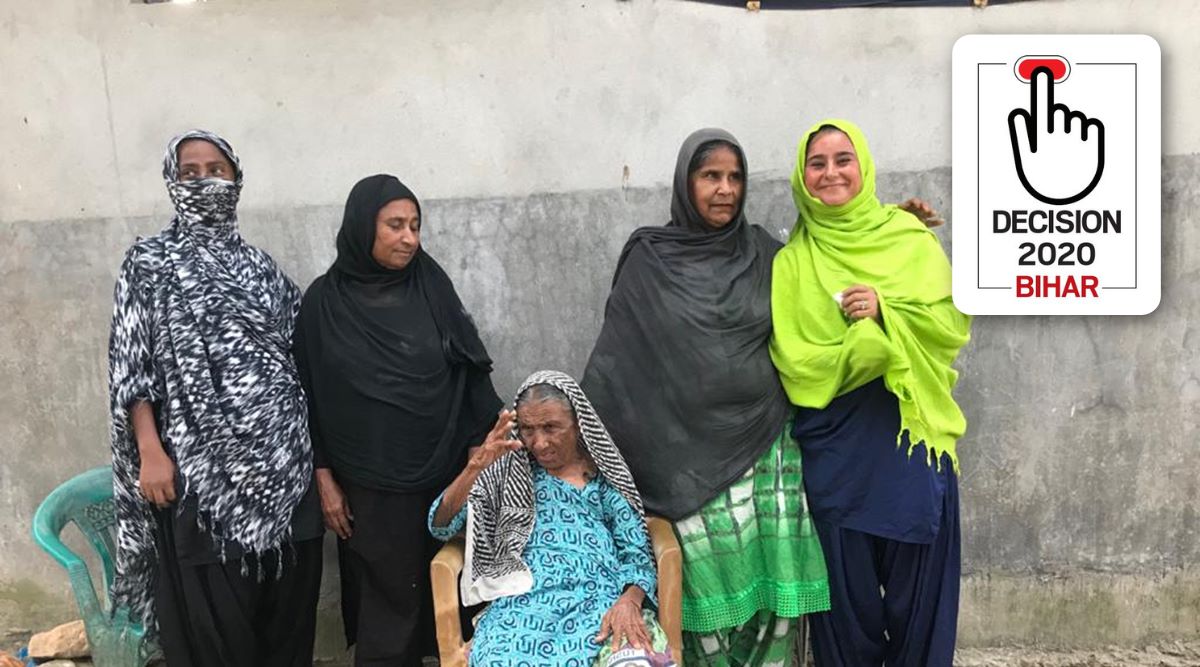A Shia community traces lineage to horse traders who came from present-day Iran centuries ago.
In the heart of Kishanganj in Bihar’s Seemanchal region, stands a dwelling of a small Shia community, of around a thousand people, who trace their lineage to present-day Iran. A nondescript road from Churipatti locality leads to the Irani Basti, where hutments are lined in a crescent-like arc. Their ancestors were “horse traders who came to India centuries ago, even before the Mughal rule was established, travelled to various parts, and some settled down here”, says Nadim Hussain, 40, sitting inside a mosque after the Juloos-e-Amari procession.
Outside, in the courtyard, some women are washing utensils from the community lunch that preceded the procession. Among those talking animatedly in Persian is 85-year-old Begum Khatoon, who says the community lived the life of nomads and settled down in Kishanganj half-a-century ago. “We lived in tents in Khagra on the outskirts of the city. Later, we set up our base here and people now call this Irani Basti,” she says. A few metres away from her lives Seemazar Begum with her four children and grandchildren. “My great grandfather had come here and we all (inhabitants of the Basti) are from the same family,” says the wrinkled-face Begum in Persian, whose family claims she is easily 110 years old. (Follow Bihar Elections voting LIVE Updates here)
The Persian they speak is similar to what is spoken in the Shiraz province of Iran, mixed with Hindi, says Mohammad Minhaj Alam, of the neighbouring Uttar Dinajpur in West Bengal, who studies Persian at Tehran’s Allahmeh Tabataba’i University. “Certain verbs they use are old Persian,” he says.
The community clings to its roots, says Hussain. And marriges outside the clan, especially by women, are frowned upon.
As nomads, they earlier sold horses for a living, now earnings come largely from sourcing stones believed to be lucky, glass frames, etc from Jaipur, and selling them in the Northeast. “We go all the way to Tripura,” says Safdar Ali, 27. “Like our ancestors, we can’t sit at home either.”
The lockdown, however, has forced him and others out of business.
Tucked in the north-east corner of Bihar, bordering Nepal and Bengal, Kishanganj is the gateway to north Bengal and the Northeast. It is assailed by the same problems (floods, unemployment, etc.) as the rest of Bihar’s most backward region, the historically neglected but politically significant Seemanchal.
Most of them in the Irani Basti have Aadhaar cards but only a few get subsidised ration. “The names on the government list have deliberately not been updated,” says Hussain. The nearest hospital is 1 km away. The Basti has electricity but no running water and relies on hand-pumps. “Water lines have been laid recently but supply has not begun yet,” Hussain says.
Afsar Ali, 45, the community head, says, nearly 100 members of the community have voter ID cards. However, not all of them vote. “When we moved to this place from Khagra on the outskirts, names of some of the community members were not added to the voters’ list. We tried to find out the reason but never got a response,” says Ali.
While the Nitish Kumar government got a resolution passed in the Assembly against implementation of an NRC in the state, the community remains apprehensive about such a plan. “We have lived here for centuries and have documents to prove it,” says Hussain.
A mosque that the community uses located a kilometre from the Basti has a plaque dating it back to 1896.
In 2019, in a bypoll, the AIMIM had won the Kishanganj Assembly seat that has long been a Congress bastion.
However, Hussain says, all parties make a beeline just before the elections, but “who remembers us once the results are out”. “We will vote for the candidate who is best placed to defeat the BJP.”
Source: Read Full Article



